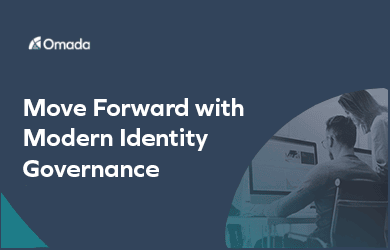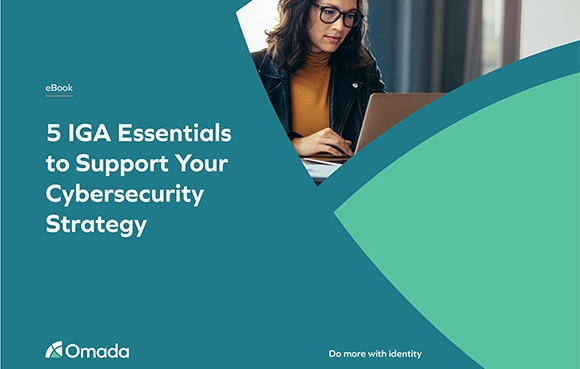On the path to achieving information security in cloud-hosted environments, no strategy has captured the attention of organizations like the Zero-Trust security model. At the core of Zero-Trust is the principle of least privilege, also known as the principle of minimal privilege. Using least privilege as a driver, critical systems within a modern identity governance solution afford user accounts and devices the minimum access they require to perform their tasks. This practice limits the potential damage that compromised user accounts or devices can cause.
The gap for most organizations between initiating Zero-Trust and implementing the strategy could scarcely be starker. According to Statista, 97 percent of companies report having zero-trust security initiatives in 2022. However, Gartner reports that just one percent of companies currently have cybersecurity programs that operate on the assumption that threats may already exist within their networks and that both external and internal actors could potentially be malicious. Their systems do not automatically distrust every privileged account, device, or application—even if they are already within the network perimeter. They do not enforce strict privileged access controls and continuous verification of identities and devices, regardless of their location within or outside the network. In other words, they are not mature enough to meet the definition of Zero-Trust.
In this blog, we’ll explain why least privilege is essential to modern identity governance. You’ll see why legacy identity governance systems are unsuitable for the job and how modern identity governance is the fastest and most cost-effective way to close the gap between calling for a Zero-Trust security initiative and creating a successful, mature program that truly works. We’ll provide some insight into what you should look for in a modern identity governance solution to ensure that you can use least privilege access controls as the backbone for building your Zero-Trust initiative into a mature Zero-Trust model. Finally, we’ll help you figure out how to get started.
The role of least privilege in modern identity governance
The principle of least privilege governs the practice of granting users, devices, and processes only the minimum access or permissions required to perform their tasks. The benefits of the principle include reducing the attack surface and mitigating the potential impact of security breaches or unauthorized access to sensitive data. Least privilege is essential for modern identity governance for many reasons, including:
- Mitigating insider threats. Least privilege forces users, even those with administrator privileges or other enhanced privileges to continually verify their identities. Even if an attacker were to gain unauthorized access to a system, least privilege limits the damage they can do inside.
- Stopping external attack vectors. Much like locking the front door of your house, restricting users and processes to only the permissions required for their specific roles just keeps the “honest people” from compromising your security. Least privilege goes a step further. When attackers unleash sophisticated phishing and other social engineering scams to affect a security breach, least privilege provides added internal control and significantly reduces their ability to carry out malicious activity. Attackers are limited in what they can do even if they manage to gain unauthorized access.
- Reducing data breach risk. Despite reasonable efforts, many organizations have difficulty managing entitlement creep and separation of duties. Excessive permissions and toxic combinations increase the chance of both accidental and intentional security failures and invites misuse of sensitive data. Least privilege for employees helps mitigate these risks by limiting the potential fallout.
- Helping satisfy compliance requirements. Many organizations manage strict industry- and geography-specific regulations. Least privilege can contribute to meeting compliance requirements by ensuring the organization can control and audit sensitive data.
Why legacy identity governance is not effective for enforcing least privilege
Historically, the goal of legacy identity governance solutions was to ensure compliance with privacy and security regulations. To create legacy systems, organizations acquired software and wrote custom code to install and implement it so on-site staff could use it in a given on-premises environment. As organizations added more advanced elements to their environment, they had to make even more customizations to account for them. Over time, these various customizations often break essential functionality and organizations must expend even more resources to make it work. Add the complexities of both cloud-hosted environments and the proliferation of workers accessing systems remotely and we quickly see legacy identity governance solutions being outmoded. Today, there is a “new perimeter” that organizations must manage to apply a least privilege-driven modern identity governance solution that creates a true mature Zero-Trust security program.
How least privilege help create Zero-Trust
Implementing least privilege in a modern identity governance program can accelerate your organization’s migration to a mature Zero-Trust security model. Here’s how:
- Easier to track and monitor user activity. Implementing least privilege makes it simpler to identify suspicious or unauthorized actions.
- Simpler access management. When users change roles or responsibilities within the organization, least privilege informs administrators on how to adjust permissions more easily based on their new requirements.
- Sharper role definition. Least privilege features role-based access control (RBAC). Organizations can assign permissions based on users’ roles and restrict access to what is sufficient to do their jobs.
- More efficient privilege elevation. When users require temporary elevated permissions to perform specific tasks, administrators can use least privilege to implement controlled privilege elevation mechanisms. This reduces the risk of permanently granting high-level access.
- Automated provisioning and deprovisioning. Automated tools and processes provision and deprovision user accounts and their associated permissions throughout the identity lifecycle. This reduces the risk of human error and ensures that access is granted or revoked consistently.
What to look for in a least privilege-focused modern identity governance solution
Ensuring you have the right solution in place is critical to creating a least privilege-driven modern identity governance solution that makes Zero-Trust possible. You also need a solid plan for implementing the solution; one that enables you to meet your current requirements and flex to meet future complexities. Here is a list of must-haves for your next identity governance solution:
SaaS-based. Ongoing on-premises software maintenance, upgrades, and patching are significant challenges for organizations still using legacy identity governance. The staff required to perform these tasks are an expense that is likely to rise year after year. A SaaS-based solution eliminates the need to do these things and reduces total cost of ownership for the solution.
Configurable rather than customizable. As we discussed, every time an organization must write custom code to address a new functionality requirement the risk of “breaking the system” rises. When the system does break, it takes time and resources to fix. A modern identity governance solution must be configurable to reduce time to implementation and meet your needs.
Cloud-ready. Legacy identity governance tools are not suitable to apply the principle of least privilege to cloud-managed environments. You must be able to configure your modern identity governance solution to function in the digital enterprise with no customization.
Easy to integrate. Your solution must get the identity governance right, starting with least privilege. You must be able to integrate identity governance with other solutions such as best-in-breed privileged access management (PAM) and identity access management (IAM) to create a true Zero-Trust model.
Start with a good plan
Omada offers a Best Practice Process Framework for Identity Governance that explains in detail how to successfully deploy and maintain a modern identity governance solution and gain all the benefits the solution can offer. This framework leverages knowledge gained from managing IGA deployments in some of the world’s largest enterprises as well as in many medium-sized businesses. You’ll learn about the most important processes needed to ensure a successful modern IGA deployment. The framework articulates well-proven best practice processes and is designed to help you avoid ‘re-inventing the wheel’ when it comes to deploying your modern IGA solution. You’ll become familiar with the most critical aspects of IGA so you can take on the potential challenges of implementing your IGA projects.
Want to learn more? Let’s get in touch.




























